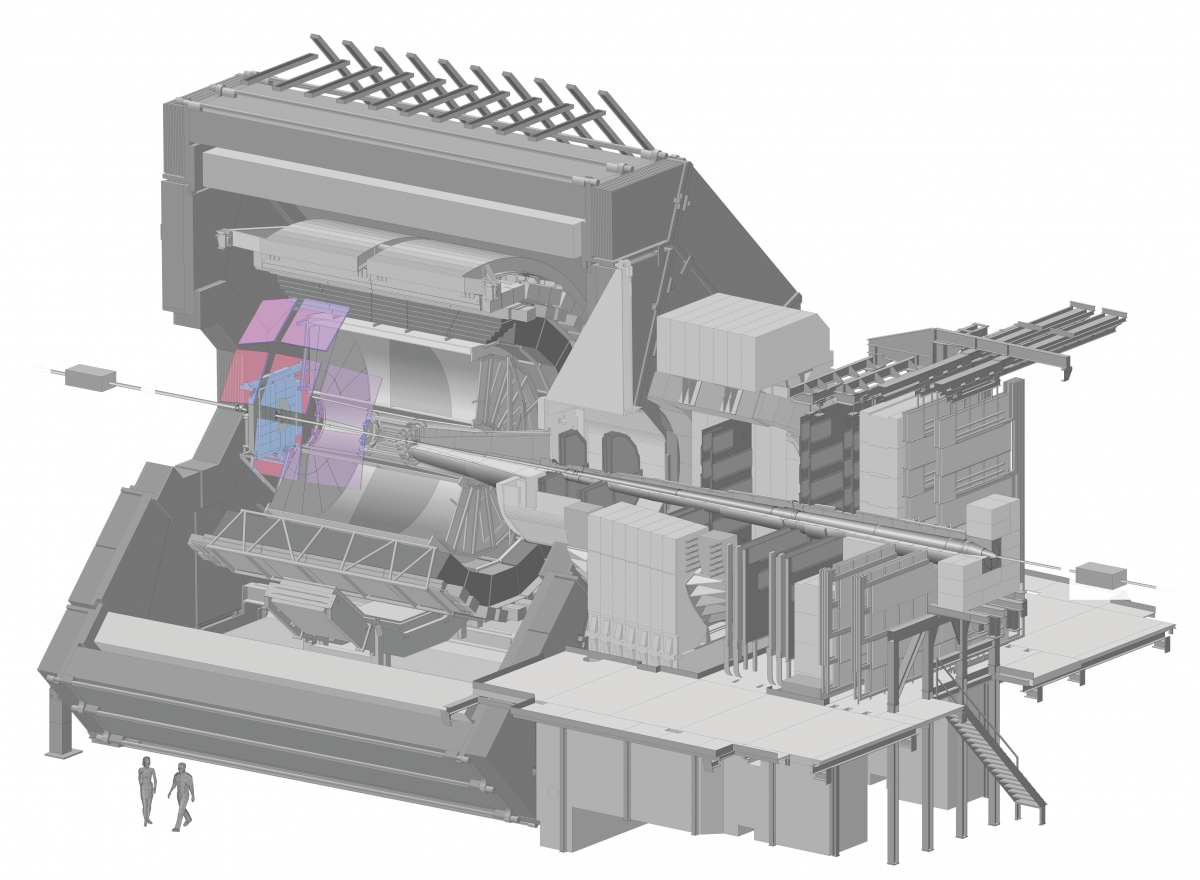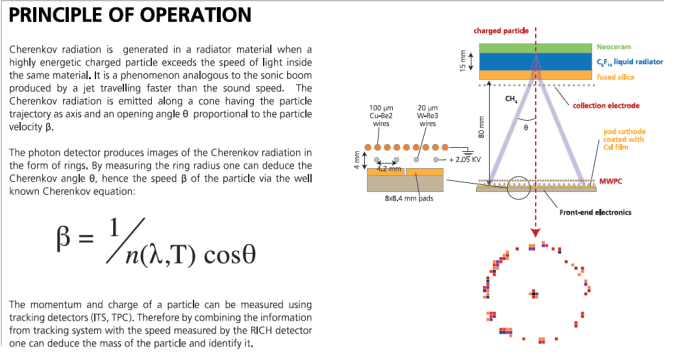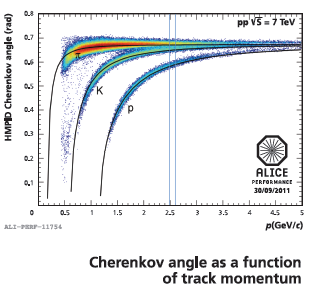ALICE HMPID

The ALICE HMPID identifies charged particles (pions, kaons and protons) having large momentum, which is a physical quantity related to the particle's mass and speed. In proton-proton or heavy-ion collisions a large amount of various types of particles is produced, from hundreds up to thousands. Particle identification provides information on the status of nuclear matter during the very energetic collisions which reproduce the conditions of the early stage of the Universe, a few millionths of a second just after the Big Bang, when matter is supposed to exist in the form of Quark Gluon Plasma.

The HMPID is a Ring imaging Cherenkov detector consisting of two main parts: a radiator medium, where the Cherenkov light is produced and a photon detector used to generate images of the Cherenkov light (rings). The system exploits three inventions awarded with a Nobel Prize: the Cherenkov effect (P. Cherenkov in 1958), the photoelectric effect (A Einstein in 1921) and the MWPC - Multi-Wire Proportional Chamber (G.Charpak in 1992).
Technical Details
Particle identification plays a key role in the complete understanding of heavy ions collisions. The HMPID consists of 7 RICH counters of 1.4 m x 1.3 m each. They are installed on a support cradle inside the ALICE solenoid. It is the largest RICH detector using CsI photosensitive elements ever used in High Energy Physics experiments.
The High Momentum Particle IDentification (HMPID) system enhances the particle identification capabilities of ALICE beyond the momentum range allowed by the energy loss measurements (ITS and TPC) and by the TOF. The HMPID detector has been designed to extend the useful range for the identification of p/K and K/p, on a track-by-track basis, up to 3 GeV/c and 5 GeV/c respectively.
It provides inclusive particle ratios and transverse-momentum spectra in the region relevant for the study of phenomena connected with the pre-equilibrium stage of the nucleus–nucleus collisions. The low yield of high-momentum particles in Pb–Pb collisions at the LHC energy regime justifies the single-arm geometry of the HMPID covering about 5% of the central barrel phase space. The HMPID is based on proximity focusing Ring Imaging Cherenkov (RICH) counters and consists of seven modules mounted on an independent support cradle, which is fixed to the space frame, at the two o’clock position.
Cherenkov photons, emitted when a fast charged particle traverses the 15 mm thick layer of liquid C6F14 (perfluorohexane), are detected by a photon counter, which exploits the novel technology of a thin layer of CsI deposited onto the pad cathode of a multi-wire proportional chamber (MWPC). The HMPID detector, with its surface of about 12 m2, represents the largest scale application of this technique.
The Cherenkov photons refract out of the liquid radiator and reach the CsI-coated pad cathode, located at a suitable distance (the `proximity gap`) that allows the contribution of the geometrical aberration to the Cherenkov angle resolution to be reduced. The electrons released by ionizing particles in the proximity gap, filled with CH4, are prevented from entering the MWPC sensitive volume by a positive polarization of the `collection` electrode close to the radiator.

Performance

The number of reconstructed photo-electrons (photon clusters in the plot) increases with sin2θ. In the plot the simulated performance of the detector (open red circles) and the detected photonclusters (black dots) are compared. The agreement between the simulation and the detector performance is good up to sin2θ = 0.35. Above the detector maintains still a very good performance.

In the scatter plot, three coloured bands define the regions of the Cherenkov angles vs. momenta for pions, Kaons and protons. Above this value the 3 GeV/c, pions and Kaons merge together while the protons still remain on a separate band up to 5 GeV/c. The black curves represent the theoretical values of the expected Cherenkov angle.
